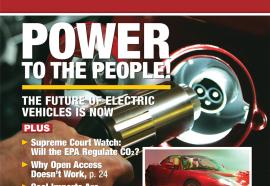Consensus, Compromise, and Chopping Wood
NARUC President James Kerr seeks harmony among an unruly bunch of state regulators.
As NARUC president, James Yancey Kerr II brings a federalist philosophy that emphasizes state and local sovereignty—and consensus among state regulators.







